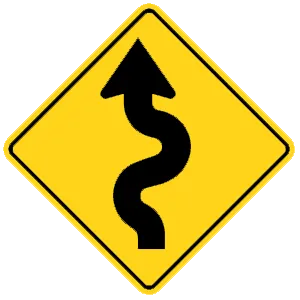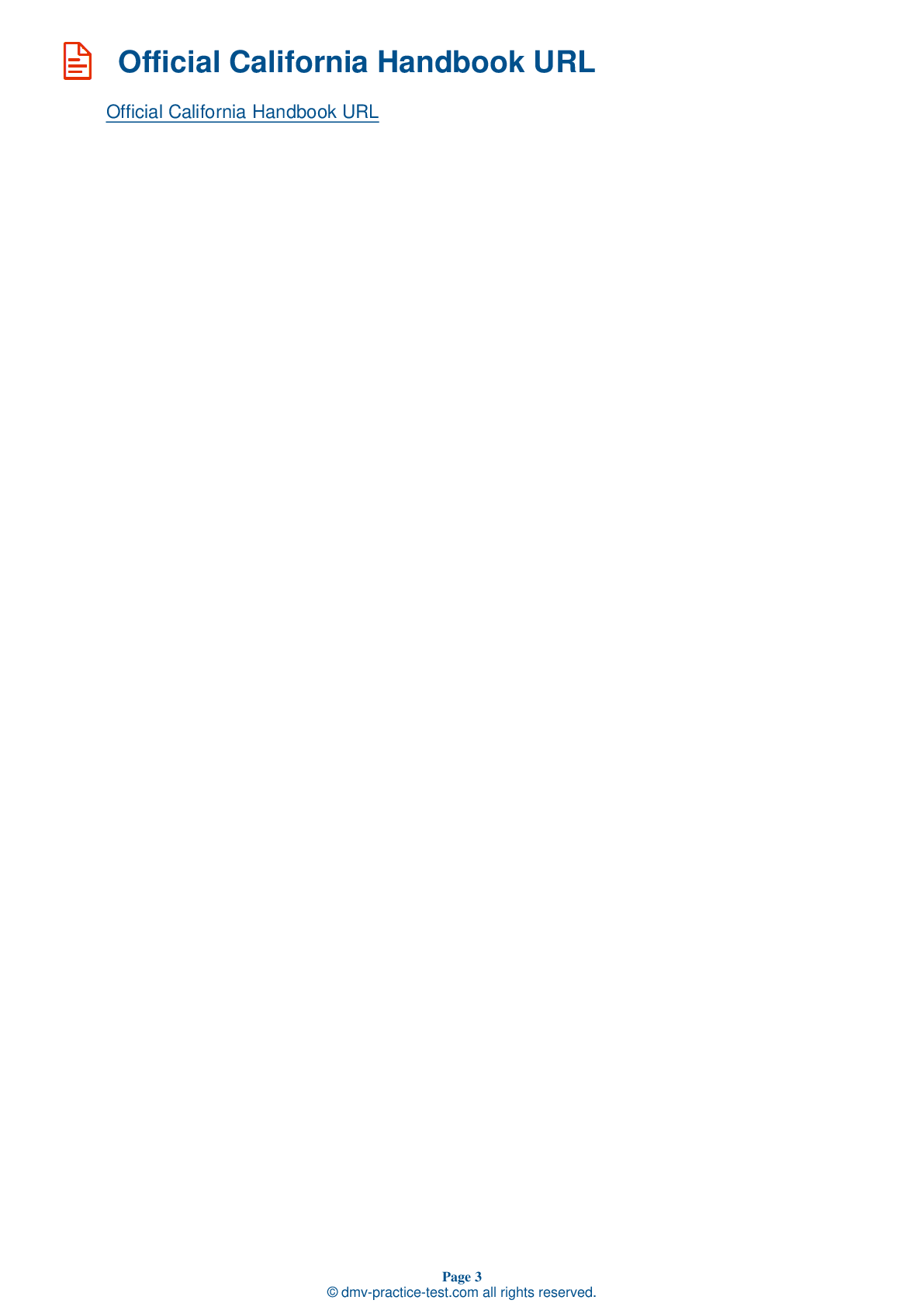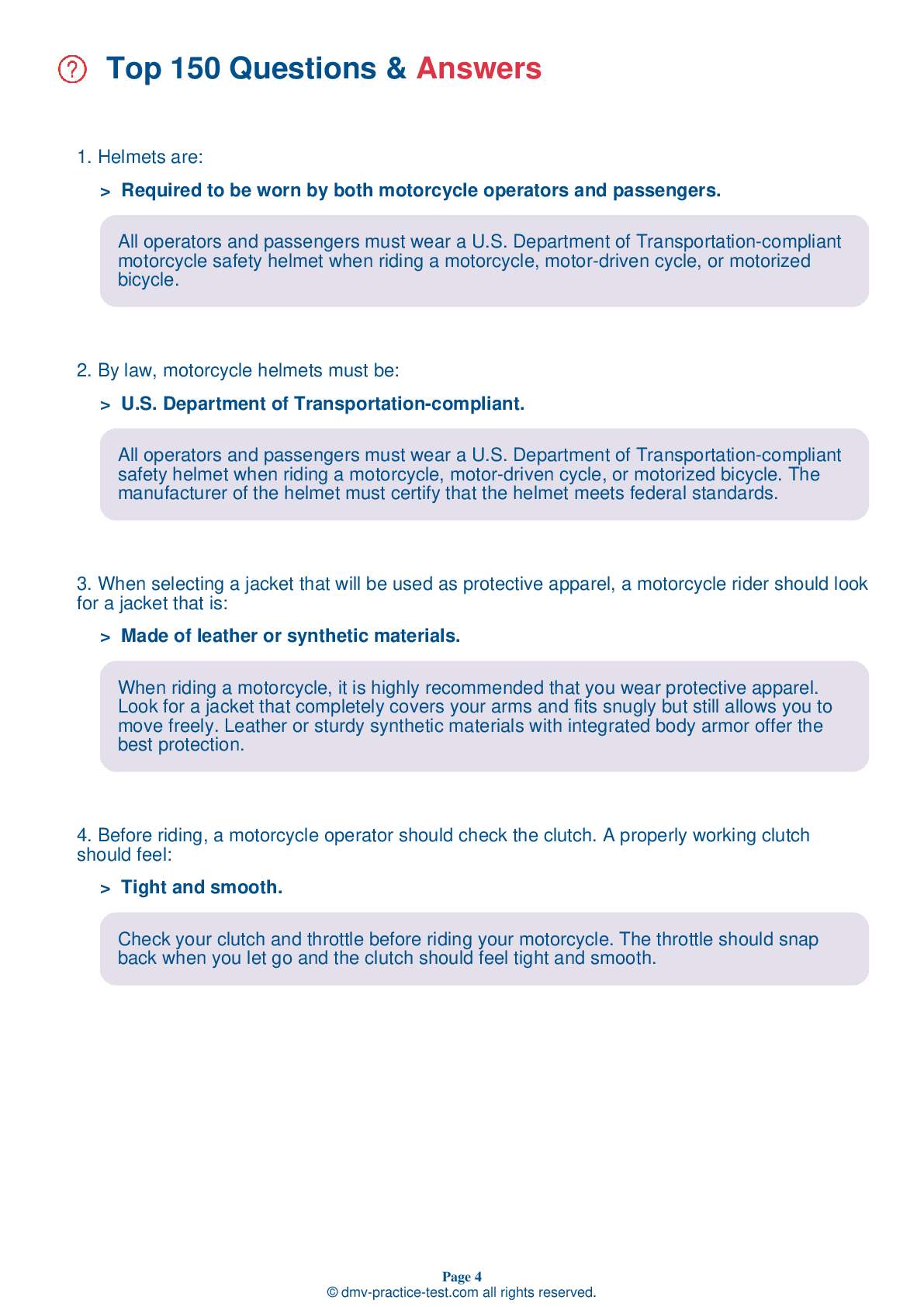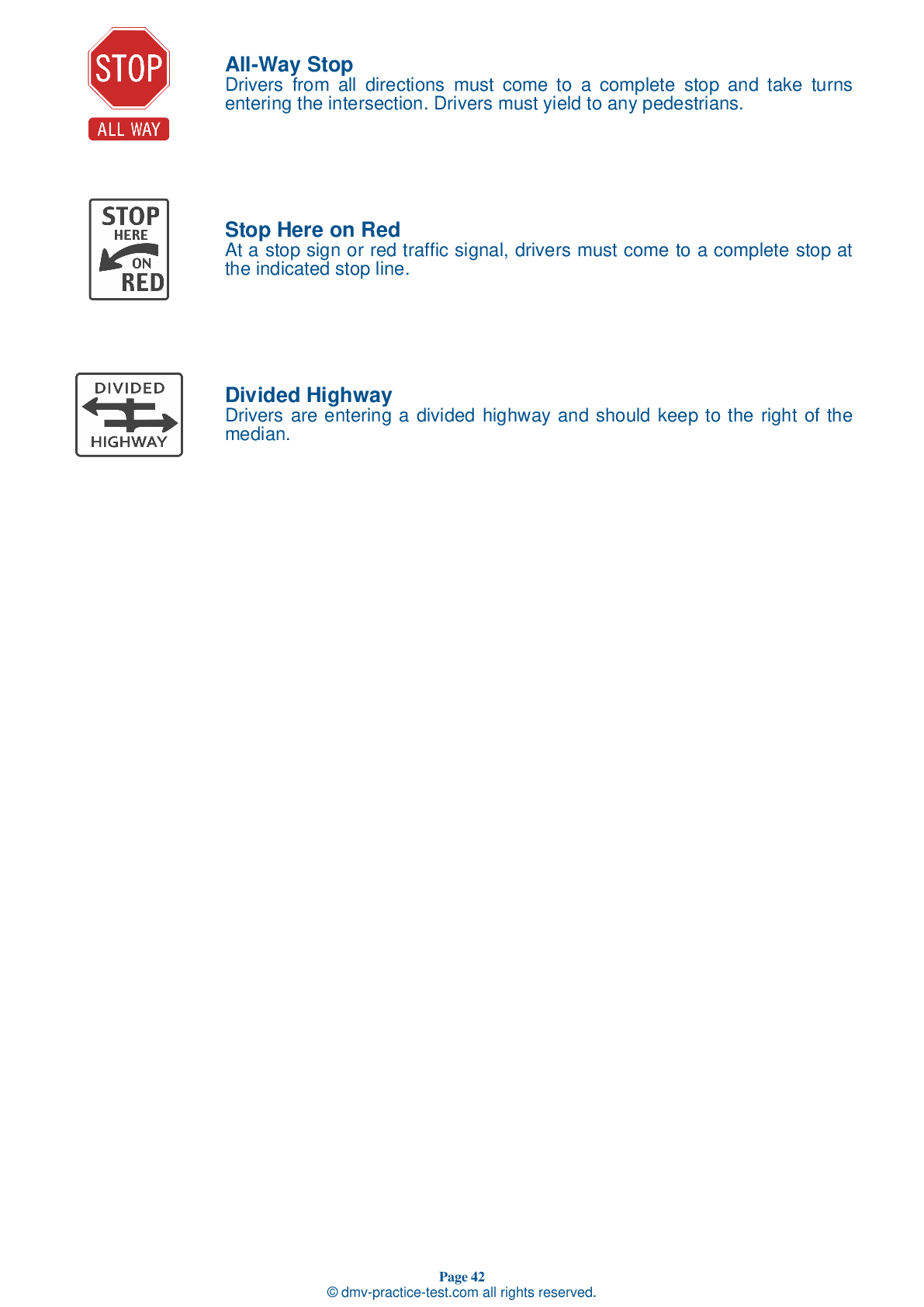Motorcycle Test | License CA 2025 | FREE Online Practice! #3 Page 4 of 4
Take this FREE motorcycle test (license in CA 2025) to check your knowledge of the road rules. To improve your results, download a motorcycle handbook online, study theory, and practice for free on our website. Still worried about how to get a motorcycle license in California in 2025? Check our website for more sample tests, train as much as possible, and boost your grades!
24 . When a group of riders is passing another vehicle on a two-lane road, the riders should:
When a group of motorcyclists is passing another vehicle on a two-lane road, the riders should pass the vehicle one at a time. Each motorcyclist should complete their pass before the next rider's pass begins.
25 . This road sign means:

Warning signs are usually yellow with black markings. This sign warns the driver that there is an upcoming winding road. Speed should be adjusted appropriately.
26 . A motor-driven cycle:
A motor-driven cycle is a motorcycle with a motor size that is under 150cc. Motor vehicles with a motor size under 150cc do not have the engine capability to be safely driven on a freeway or expressway. Operators must have a Class M1 license to operate a motor-driven cycle.
27 . Passengers should:
Before beginning your ride, tell your passenger to maintain a firm grasp on your hips, waist, or belt. If there are secure handholds for your passenger, they may also hold those.
28 . Which of the following is not a benefit of maintaining a space cushion between your motorcycle and other vehicles?
Maintaining a cushion of space around your motorcycle at all times helps ensure that you will have time to react and space to maneuver if someone else on the road makes a mistake.
29 . In hot weather, wearing a riding jacket:
A riding jacket and long pants should still be worn when riding in hot weather. In addition to their other safety benefits, they can protect a rider from heat exhaustion and dehydration.
30 . It may be unsafe to ride alongside a vehicle in the lane next to you because:
If you ride directly alongside a vehicle that is in the lane next to you, the driver may not see you because you are in their blind spot. They may begin merging into your path without knowing you are there. Additionally, if you are directly next to another vehicle, the vehicle will block your path of escape if a hazard should appear in your lane.
See the exact questions that will be on the 2025 California DMV exam.
99.2% of people who use the cheat sheet pass the FIRST TIME
Jeneen was tired of paying $5/gallon. She got herself a scooter that required the motorcycle license. She studyed the motorcycle test cheat sheet and passed her test the next day!
Christopher tells us how he knew nothing prior to obtaining the motorcycle study guide, and he only got one question wrong because he clicked on the wrong answer by mistake.



